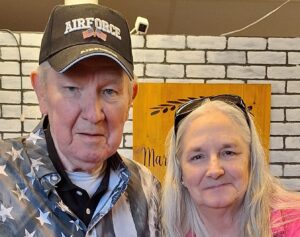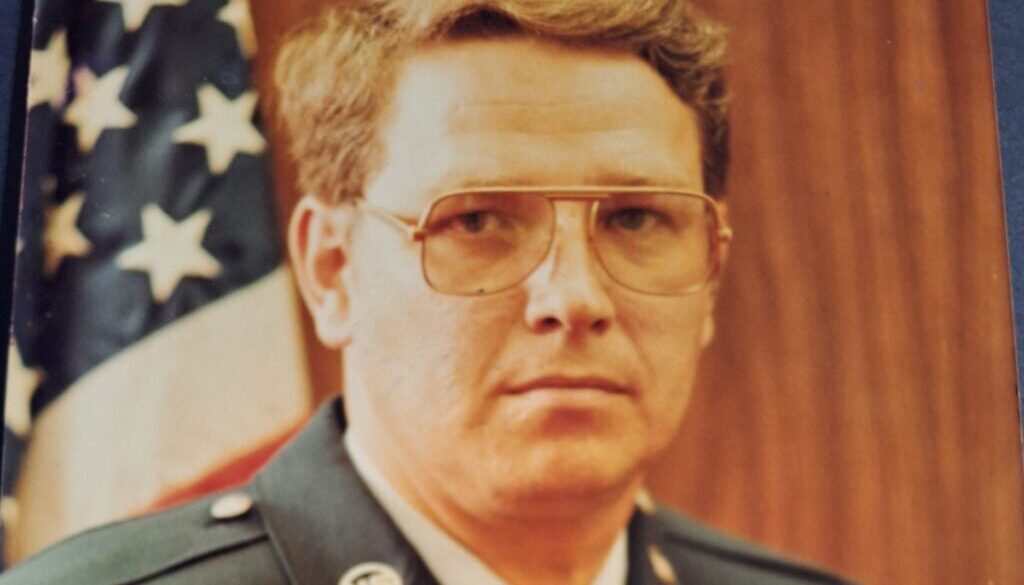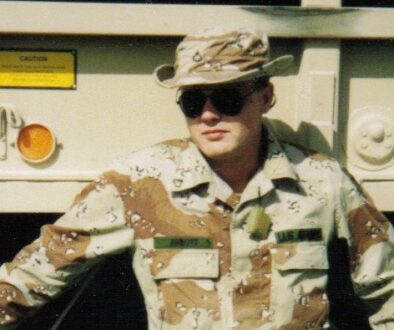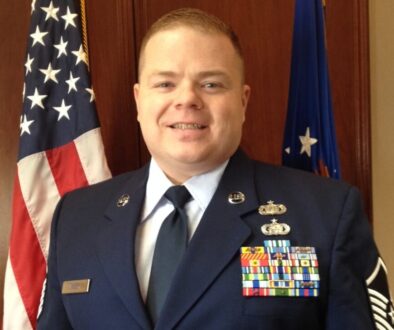Technical Sergeant Kenneth Ash, U.S. Air Force (Retired) – Twenty Years of Keeping B-52s Flying
Some people come to critical decision points in their lives and wait for the Fates to make the decisions for them. Others, like Technical Sergeant Kenneth Ash, U.S. Air Force (Retired), make the hard choices themselves and chart their own paths, unwilling to leave their futures to chance. Ken joined the Air Force in 1967 rather than waiting to be drafted, beginning a journey of service that lasted twenty years. Although he had no way of knowing where his journey would ultimately take him, he knew with certainty his choice was the right one for him at the time.
Ken was born in 1947 in Otsego, Michigan, a small town located in the southwest corner of the state. His father was an auto mechanic, and his stepmother was a longtime schoolteacher. Together they raised Ken and his two brothers and two sisters. Ken attended Otsego High School, where he played basketball for his first three years and trombone in the band for all four. During his senior year, he also worked at an auto parts store with his father. He graduated in the spring of 1967, near the height of the Vietnam War.
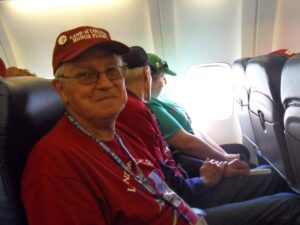
Realizing they would soon receive their draft notices, Ken and a close friend decided to take matters into their own hands and visit an Air Force recruiter in Kalamazoo. They enlisted and were instructed to report to the Armed Forces Examining and Entrance Station (AFEES) in Indianapolis, Indiana, for their final physical exam and to take their oath of enlistment. They did as instructed; however, while Ken’s friend headed off to basic training in San Antonio, Ken did not immediately come on active duty because AFEES Indianapolis had already filled its basic training quota for the month. Accordingly, Ken went home and returned to the AFEES on July 27, 1967, to officially start his Air Force career.
Ken flew from Indianapolis to San Antonio, Texas, where he and other new recruits boarded a bus to Lackland Air Force Base (AFB) for basic training. When they arrived, they were greeted by lots of “screaming and hollering” and ushered into a big room where they met their drill instructors. Next came their barracks, new uniforms, and haircuts. Ken’s barber left him completely bald, which turned out to be okay because everyone else in his training flight—the group of trainees he was part of—was too. Soon, they all settled into their routine of getting up at 5:00 a.m., marching around the base, conducting training events like learning to fire a rifle, and eating as much as they could at the dining hall in the few minutes they were allotted at each meal.
Although basic training reminded Ken of Boy Scout camp, there were significant differences. Most obvious was the oppressive Texas summer heat. Sometimes it was just too hot to train outdoors. To determine if a particularly hot day met that threshold, Ken’s drill instructor put his bare arm on the concrete pavement. If the concrete burned his arm, he called off the affected training event. Also unlike Boy Scout Camp, basic training had drill instructors who were experts at identifying and holding recruits accountable for real or imagined infractions. Ken learned this firsthand when he had to stand with his nose against a wall until the drill instructor determined he had paid sufficiently for whatever it was the drill instructor thought he had done.
Ken graduated from basic training as an airman basic (E-1) in September 1967 and reported to Chanute AFB in east-central Illinois for hydraulics school. There he learned to repair and maintain the many hydraulic and pneumatic systems found in every type of Air Force aircraft. He completed the training in time to make it home for the holidays at the end of December. Then, in February 1968, he headed west to Fairchild AFB in Spokane, Washington, for his first operational assignment.
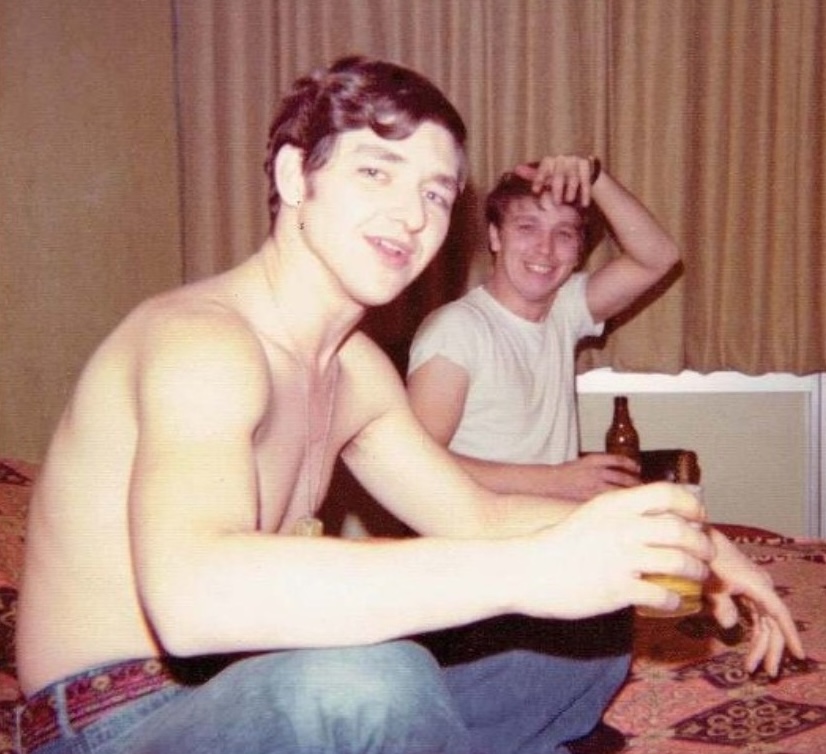
Once Ken arrived at Fairchild, he reported to the 92nd Field Maintenance Squadron, which provided maintenance support to the 92nd Bombardment Wing’s B-52 strategic bombers. Ken’s squadron assigned him to the hydraulics shop so he could put his recent training to good use. The squadron also told him not to unpack because they were getting ready to deploy to Andersen AFB in Guam, together with all the B-52s and their crews from the 92nd Bombardment Wing. Ken and the B-52s arrived in Guam in March, and soon the big jets were flying thirty combat missions a day bombing enemy targets in Vietnam. Ken understood the magnitude of the effort as he watched the B-52s take off fully loaded with tons of bombs and return many hours later with no weapons onboard.
Ken, now an airman (E-2), worked twelve-hour shifts on Guam six days a week. He worked hard in the tropical heat taking care of the B-52s’ hydraulic systems, making sure the planes were ready to fly their next mission. At the end of each shift, he usually ate at the dining hall and then got as much sleep as he could to be ready for the next day. On his one day off each week, he sometimes took the opportunity to visit Tarague Beach, which offered immaculate white sand and the warm Pacific Ocean. The base also had an outdoor movie theater at the end of one of the runways. Ken enjoyed the movies there unless they coincided with bombers taking off, which made the movies impossible to hear.
In September 1968, Ken and the rest of the 92nd Field Maintenance Squadron returned to Fairchild AFB along with the B-52s from the 92nd Bombardment Wing. Ken remained with his squadron until December, when he was able to take leave before reporting to his next assignment at the 4258th Field Maintenance Squadron at U-Tapao Air Base in Thailand.
Ken arrived at U-Tapao in February 1969 and began working in the squadron’s hydraulics shop. As with his previous assignment, he worked on the hydraulics systems for B-52s flying bombing missions over Vietnam. Also as before, he worked twelve-hour shifts, six days each week, although once a month he enjoyed a two-day break. He also promoted to airman first class (E-3) soon after arriving.
One of Ken’s responsibilities included manning the “launch trucks,” which were vehicles staffed with maintenance personnel ready in case a B-52 scheduled for a mission developed a problem. When that happened, Ken and the other technicians descended on the airplane to diagnose and, if possible, fix the problem so the airplane could fly. For example, on one occasion, a pilot complained his B-52 started shuddering as the plane rolled down the runway to take off. Concerned it could be something major, the pilot taxied the B-52 back to the runway apron to let Ken and the others investigate the problem. At first, Ken and his teammates tried running alongside the plane once it started to move to see if they could identify the issue. That didn’t work because the pilot could not replicate the problem at such slow speeds. Accordingly, the pilot convinced Ken to climb up inside the main landing gear wheel well to see if he could detect the cause of the vibration while the pilot got the plane going faster down the runway. Ken agreed, but only after the pilot promised him the plane would not take off. This time, when the pilot got the B-52 speeding down the runway, Ken felt the shudder, too, and recommended the pilot park the plane so the maintenance team could troubleshoot and fix the problem. The pilot agreed and scrubbed the plane from the mission. Soon, the wing commander, a one-star general, arrived on scene to see why the plane could not fly. In the end, the maintenance team determined improper tire pressure on two of the bomber’s wheels caused the vibration. Ken earned his pay that day, which turned out to be typical of the efforts he and his teammates put forth to keep the B-52s flying.
The other people keeping the B-52s flying were the planes’ crewmembers. Because they flew the planes into harm’s way over hostile enemy territory, they formed tight bonds. After a guard at a security checkpoint on the tarmac hassled some crewmembers heading to their plane, the pilot demonstrated just how strong that bond was. As he prepared his B-52 for takeoff, he positioned the plane for a full-power engine check near the offending guard’s shack. He then revved up his eight jet engines, blowing the shack and the guard across the pavement. Even though Ken wasn’t involved in the incident, he and everyone else on base got the message loud and clear—don’t mess with the B-52 flight crews.
Although there was always the potential for an attack from North Vietnamese infiltrators, Ken occasionally got the chance to go off base for some “R&R” (rest and relaxation). On those weekends when he had two days off, he sometimes escaped to Pattaya Beach on the Gulf of Thailand to enjoy the ocean and decompress from work. He wasn’t the only U.S. servicemember taking advantage of what Pattaya Beach had to offer. The location was also popular with U.S. soldiers and Marines getting a short R&R break from their tours in Vietnam.
Ken completed his one-year tour of duty at U-Tapao in February 1970. He had excelled during his tour and, as proof, promoted to sergeant (E-4) while there. Unfortunately, he was also exposed to Agent Orange, which was used to control vegetation around the base. He would suffer health consequences later in life as a result. In the immediate term, though, he transferred to the 379th Field Maintenance Squadron at Wurtsmith AFB on Michigan’s east coast, where he again worked in the hydraulics shop.
Life at Wurtsmith differed dramatically from life in Thailand. Ken now worked just eight hours a day, five days a week. He also stood standby duty one weekend each month. He first recognized the pace at Wurtsmith would be significantly slower when he reported to the hydraulics shop and saw the flight status board indicating the tail numbers of the B-52s scheduled to fly missions. Based on the flight volume he had grown accustomed to in Thailand, he asked his supervisor if the board showed the next day’s flights. His supervisor replied it did not—it showed all the flights scheduled for the following week.
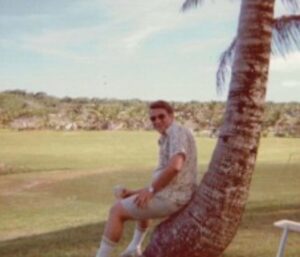
Fewer flights meant spending less time conducting maintenance and more time training. It also meant Ken had more time for other pursuits, especially off duty. Specifically, he could visit his family in Otsego now that they were only five hours away. He also got married and subsequently welcomed his daughter, Stephanie, into his life in 1972. Then, after U.S. participation in the Vietnam War ended in 1973, he again deployed to Andersen AFB in Guam, this time to help B-52 maintenance teams transition from their wartime readiness to meet peacetime and Cold War needs. He returned to Wurtsmith AFB at the end of the three-month deployment. After his first marriage ended in divorce, Ken met Colette McArdle on a blind date, and they were married in April 1975. The couple had their first son, Andrew, later that same year.
After spending seven years at Wurtsmith AFB and promoting to staff sergeant (E-5), Ken transferred with his family in June 1977 to Ellsworth AFB near Rapid City, South Dakota. Ken reported to the 28th Field Maintenance Squadron, although this time with a different role. Instead of working on hydraulics systems himself, he served as the field training instructor teaching the squadron how to maintain the hydraulics systems for the B-52 model H, which the base’s operational squadrons were just beginning to fly, and the KC-135A inflight refueling tanker aircraft, which also operated from the base.
The biggest challenge Ken faced at Ellsworth did not come from work, but from the extreme South Dakota winters. At times, the chill factor reached seventy-five degrees below zero, making it impossible to work on the planes parked on the tarmac. At other times, maintenance teams could work for only twenty minutes before having to warm up in their vehicles parked alongside the planes. Sometimes, just getting to the base proved difficult because of the heavy snows the area received. Ken and his family lived five miles off-base in Air Force housing at a de-activated NIKE missile site, accessible by a single road from the base. Until base plows cleared snow from the road, Ken and the other families living at the site were trapped. In fact, the site was so isolated that Ken’s backyard was designated as a helicopter landing zone in the event the Air Force needed to deliver food and other supplies to snow-stranded families. One thing the snow did not stop, however, was Ken and Colette having their second son, Josh, in 1981.
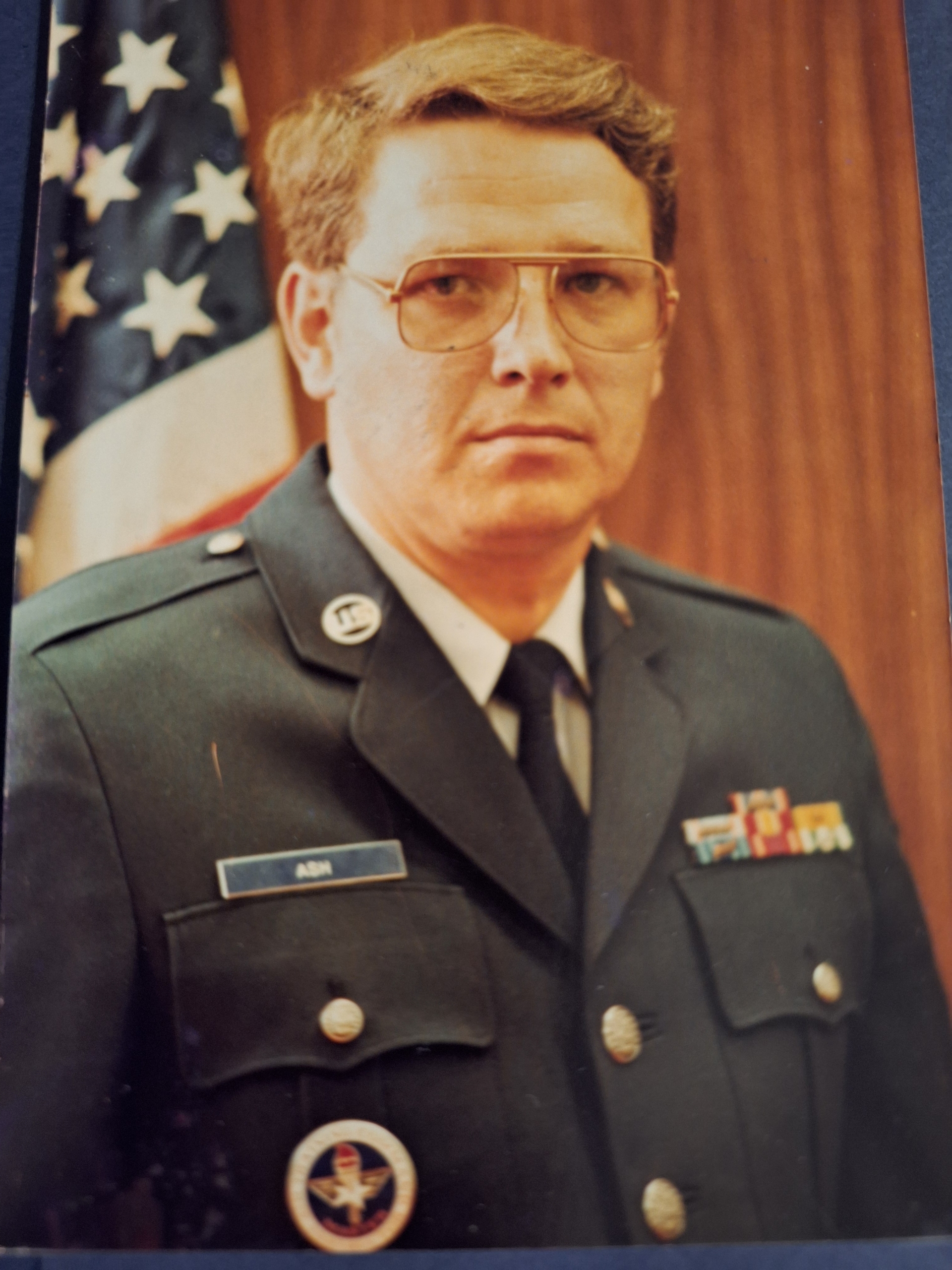
Ken promoted to technical sergeant (E-6) at Ellsworth AFB and then transferred to Field Training Detachment 910 at Hahn Air Base in West Germany in 1983. This time, Ken taught how to repair and maintain the hydraulics systems on F-16 jet fighter aircraft, using the vast experience he’d gained working on similar systems for the B-52. The tour proved a great opportunity for Ken’s family, as they lived off-base in the small town of Gösenroth, immersing themselves in German culture every chance they could. Not only did the two boys learn to speak German, but the entire family also traveled throughout West Germany, as well as to Luxembourg and France.
In 1986, Ken returned to working on B-52s, this time as part of the 2nd Field Maintenance Squadron at Barksdale AFB in Shreveport, Louisiana. He remained there until July 31, 1987, when he retired from the Air Force after twenty years of service.
With his Air Force career behind him, Ken and his family moved to Florida, where he followed in his father’s footsteps and began working in the auto parts business. Wanting to be closer to family, they moved again in 1989 to Springfield, Illinois, where Ken continued working in the auto parts industry. He retired in 2014, and he and Colette now enjoy spending time with their many grandchildren and great grandchildren. Ken is also a member of AMVETS and is a life member of the Veterans of Foreign Wars (VFW).
Voices to Veterans is proud to salute Technical Sergeant Kenneth Ash, U.S. Air Force (Retired), for his twenty years of distinguished service to our country. Volunteering to serve during time of war, he helped save American lives in Southeast Asia by keeping B-52 bombers ready to fly missions in support of U.S. and allied ground troops. He similarly helped keep America safe during some of the hottest days of the Cold War by maintaining the operational readiness of the U.S. strategic bomber force. We thank him for all he has done and wish him fair winds and following seas.
If you enjoyed Ken’s story, please sign up for the Voices to Veterans Spotlight monthly newsletter by clicking here. Once each month, you’ll receive a new written veteran’s story directly in your mailbox. Best of all, it’s free and you can unsubscribe at any time.
